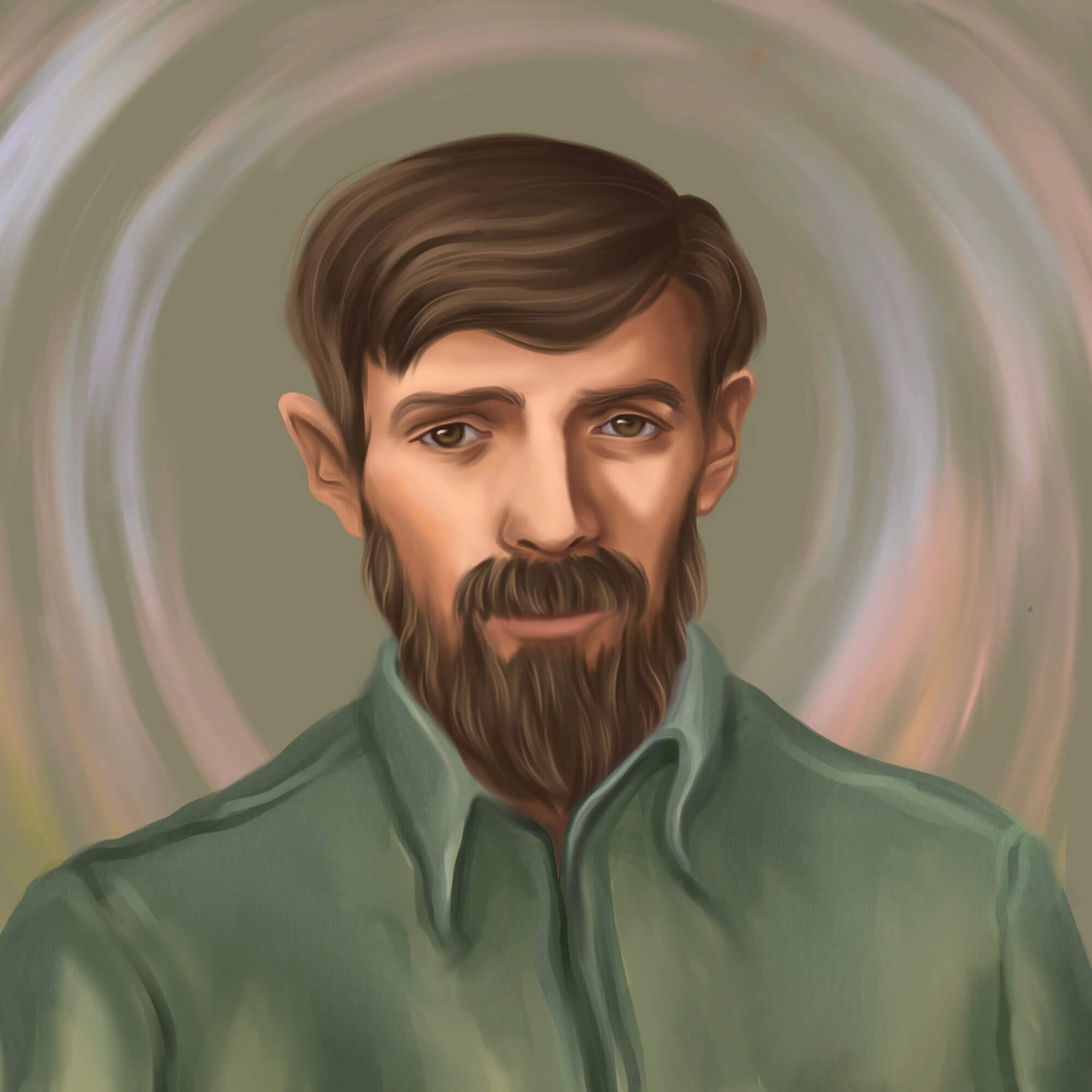David Herbert Lawrence, who was later to write under the name D.H. Lawrence, was born in September of 1885 in Eastwood, Nottinghamshire, England. He was the fourth child born to Arthur John Lawrence and Lydia Lawrence. The family lived in a mining town and his father worked as a miner and his mother as part of the lace-making industry. His parents did not get along well, causing a never-ending stream of tension within the family. These moments provided inspiration for his later works.
Timeline
David Herbert Lawrence is born in Eastwood, Nottinghamshire, England, to Arthur John Lawrence and Lydia Beardsall.
Lawrence attends Beauvale Board School, later winning a scholarship to Nottingham High School.
Lawrence briefly works as a junior clerk at Haywood’s surgical appliances factory before falling ill with pneumonia.
Serves as a pupil-teacher at the British School, Eastwood, while also working on his writing.
He qualifies as a teacher and moves to London, where his literary career begins to take shape.
Lawrence experiences personal turmoil with the death of his mother and the end of a relationship with Jessie Chambers.
Lawrence meets Frieda Weekley (née von Richthofen), leading to their elopement and departure for Europe.
Lawrence completed the final version of his novel Sons and Lovers and began work on The Rainbow and Women in Love.
Marries Frieda Weekley after her divorce is finalized. They become involved in London literary circles.
The Rainbow is suppressed due to alleged obscenity.
Begins a period of voluntary exile from England, traveling extensively through Europe and beyond.
Settles briefly in the United States, collaborating on a novel with Mollie Skinner and writing Studies in Classic American Literature.
Acquires the D.H. Lawrence Ranch in New Mexico, where he spends two years before returning to Europe.
Lady Chatterley’s Lover is published, facing controversy and censorship for its explicit content.
Lawrence dies in Vence, France, from complications of tuberculosis.
Frieda has Lawrence’s body cremated, with his ashes spread in the Mediterranean. She later remarries Angelo Ravagli and lives on the Taos ranch.
Early Career
Lydia Lawrence is credited with installing in her son his love of literature and a desire to better his life. While his years in the forest of Sherwood to the north of Eastwood gave him a love for nature. As a young man, Lawrence attended Beauvale Board School for seven years.
In 1901, he left the area and moved to work as a junior clerk at a surgical appliance factory. His time here came to an end when he contracted pneumonia. It was during his recovery that he met and began a long friendship with Jessie Chambers. Over the following years, Lawrence was a pupil-teacher at the British School in Eastwood. He went on to work full-time and received a teaching certificate from University College, Nottingham. It was towards the end of 1907 that he won a short story competition and began to garner attention for his written works. He published ‘An Enjoyable Christmas: A Prelude‘ in the Nottingham Guardian.
During the early years of his career, Lawrence left home and moved to London. He taught at Davidson Road School and continued to write on his body of work. In 1909 his work was published in the English Review. In 1910, Lawrence’s mother died. He was devastated by the loss and took more than a year off of writing.
Literary Works and Mid-Career
In 1911, Lawrence’s first book, The White Peacock, was printed by William Heinemann. It was only a year later that his second novel, The Trespasser, was published. It revolved around experiences he had with a fellow teacher who committed suicide after an affair.
The months of 1912 were important in the life of D.H. Lawrence as he met and fell in love with Frieda von Richthofen, the wife of a professor from Nottingham. The two soon ran off together and traveled to Italy. It was here that he published his first play, The Daughter-in-Law. It was followed by Love Poems and Others a year later.
This period of time was the most productive of Lawrence’s life, with the publication of his third novel, Sons and Lovers, in 1913. Lawrence and his lover, Frieda, returned to England in 1914 and got married. It was the same year that Lawrence published his most highly regarded collection of short stories, The Prussian Officer. It was soon followed by The Rainbow. This was a sexually explicit work that received a great amount of criticism from readers. The book was quickly banned for obscenity.
Later Life and Travels
The banning of his novel set Lawrence against his country. He had hopes of leaving but was unable to due to the start of World War I. Lawrence and his wife moved to Cornwall, but he was soon banished from the region due to his reputation and the fact that his wife was German. They were seen as being a threat to wartime security. The couple was forced to leave Cornwall at three days’ notice. They moved to a small village near Newbury and then a cottage in Derbyshire. In 1919 there was an outbreak of influenza in the area, which Lawrence almost did not survive.
These were years of great turmoil and change for Lawrence as he established a close friendship and possibly romantic relationship with William Henry Hocking, a farmer from the area. There is no clear record of what kind of relationship the two had, but Lawrence’s wife was sure that it was romantic. Lawrence showed an interest in themes of homosexuality in his works, especially within the volume Women in Love.
As soon as he was able to, Lawrence left Britain and traveled to Australia, Sri Lanka, the US, the South of France, and a number of other destinations. He published poems during this period. Those who complied in the collection, Birds, Beasts and Flowers, were seen as some of the finest regarding the natural world.
In the later part of Lawrence’s life, he migrated to the town of Taos in the United States. He lived there for two years and wrote Studies in Classic American Literature. In the mid-1920s, he suffered from malaria and TB, recovered, but his health was permanently impacted. Over the final years of his life, Lawrence spent time in a sanatorium and continued to write. Lawrence died in March of 1930 from the complications of tuberculosis.


